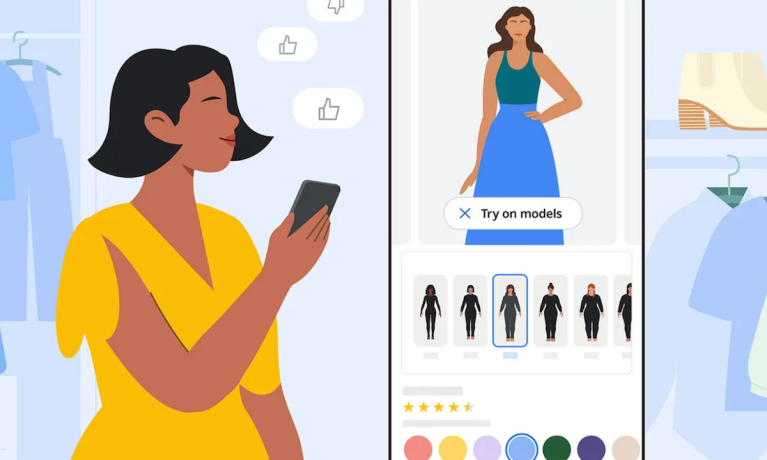The tech giant on Thursday (Sept. 5) announced it is expanding the artificial intelligence (AI)-powered offering to cover dresses, one of its most-searched apparel categories.
“This feature is made possible thanks to a generative AI technology we created specifically for virtual try-on (VTO), which uses a technique based on diffusion,” the company wrote on its blog. “Diffusion lets us generate every pixel from scratch to produce high-quality, realistic images of tops and blouses on models.”
However, testing the diffusion technique for dresses uncovered a pair of challenges. For one, dresses in many cases feature highly detailed designs. Google compared it to trying to paint an image on a small canvas.
“You can think of our VTO challenge in the same way: Our existing VTO AI model successfully diffused using low-resolution images, but in our testing with dresses, this approach often resulted in the loss of a dress’s critical details — and simply switching to high-resolution didn’t help,” the company said.
To address this, Google researchers employed a “progressive training strategy” for VTO, where diffusion starts with lower-resolution images and gradually trains in higher resolutions to reflect finer details.
Advertisement: Scroll to Continue
In addition, because dresses cover more of a person’s body than tops, Google found that “erasing” and “replacing” the dress on a person would “smudge” their features or obscure important details of their body. Google remedied this problem with a new technique called the VTO-UNet Diffusion Transformer, “which isolates and preserves a person’s important features.”
The news comes as other major players in the eCommerce world are stepping up their virtual try-on programs. For example, Walmart in July released its first annual “Adaptive Retail Report,” featuring results from a survey that looked at consumer interest in technologies such as virtual try-ons and other tools to see how items would appear in the real world.
“This focus on virtual try-on and visualization technologies suggests that Walmart may be looking to step up its existing presence in the space, with its beauty, apparel and accessories digital trial offerings,” PYMNTS wrote at the time.
And as covered here earlier in the year, virtual try-on can help shoppers make sure they get their clothing purchases right the first time, thus eliminating a headache for retailers.
“Virtual try-on helps to reduce returns because you get the best product, which you like [the most],” Wayne Liu, president and chief growth officer at AI and augmented reality (AR) beauty technology company Perfect Corp., told PYMNTS in February.

